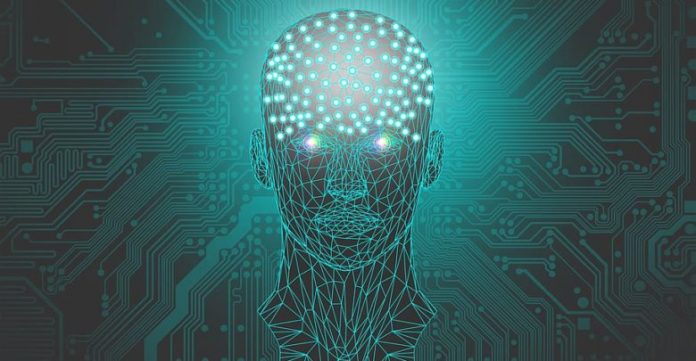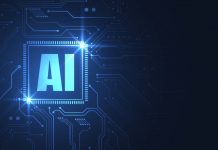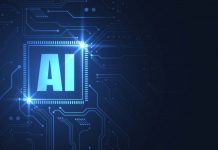This article is written by Arghya Samaddar.
Table of Contents
Introduction
The copyright law protects the work of the author in respect of its economic and moral rights. While the former is concerned with the right of the owner to derive monetary benefits out of the work, the later is concerned with the ‘right of authorship’ by way of which the work is attributed to the author. The advent of Artificial Intelligence (hereinafter referred as ‘AI’) generated work has lead to a debate, whether an AI generated work is subject to copyright protection. It has two parts to it, (1) AI generated work with human intervention and, (2) AI generated work with minimal or no human intervention. In order to delve into the legal arena of copyright protection of a work with respect to the author, it is imperative to understand the potential of AI in the near future without limiting it to a myopic vision based on the present capabilities AI.
AI is far from having a one-size-fits-all definition. Academicians and philosophers are well aware of the challenging nature to define AI to the satisfaction of all the relevant parties of the discipline. One way to define AI is to consider the aims and goals of the discipline. There are two aspects to the definition; (1) one may ask whether the aim of AI is to build intelligent machines which can simulate the human behavior, thinking and acting like humans or (2) secondly, whether the goal is to build intelligent machines which can simulate and develop ideal rationality, thinking and acting rationally.
In 1950, Alan Turing asked whether machines can think and proposed the ‘Imitation game’ for answering the same. In the proposed game or more of a test, the machine simulates the behavior of a human in such a manner that, a third person would fail to distinguish between the machine and a human. The test proposed by Turing falls within the ambit of AI which can simulate the human behavior and act like humans. The categories in the definition are not closed compartments and there is a scope of development of AI which can simulate human behavior as well as possess the capacity to act and think rationally. The super intelligent or strong AI has a dominant literature mostly in the fictional world than in the real world. Some of the most popular narratives affirm and explore the AI which can act and think rationally referred as the machines with minds.
In the movie, The Matrix (1999) AI machines with simulated and developed rational thinking have taken over the world leading to a blurred line between reality and simulation. It explores the AI which thinks and acts rationally. The movie explores the possibility of the post modern world where the AI can develop to an extent leading to believe that the simulated world is in fact the reality. This is not very different from the test proposed by Alan Turing where the central theme is the AI’s ability to simulate to an extent deceiving a third person to believe it to be a human. In our present world with the existence of virtual reality, which can simulate reality by the help of AI, it would not be too absurd to think that in the near future AI can simulate to act and think rationally proposing an alternate reality.
Creative and intelligent AI
In a debate of whether AI should be granted right of authorship, the primary question which follows is, can AI generate original and creative work involving its skill and judgement with minimal or non-existent human intervention?
All around the world there have been instances of AI generated creative works, such as paintings, movies among others. In the year of 2009, University of Konstanz in Germany developed e-David, a painting robot. The painting robot uses complex visual feedback and optimization loop to create paintings. It is the part of the AI which represents the unpredictable nature of the output and a system which is capable of generating and creating original work. E-David goes beyond a simple photocopying machine. It does not copy a work rather, takes photographic images to draw original paintings which would have been within the ambit of copyright protection had it been created by a human. E-David is able to make unpredictable and autonomous images by taking decisions with regard to the shapes and colours, determining the best combination of light and shadow in the images in order to generate works based on new creative inputs as its own.
The development of AI has taken place in leaps and bounds to an extent that the creative work of an AI is not the extension of the artists or the programmer but it is in the territory where the AI machines themselves are the artists. One such example is AARON, developed by Harold Cohen in the Artificial Intelligence Lab at Stanford University. It can create paintings without any human intervention. It is true that it is based on a program but that does not mean that the work created by it is an extension of the program or is any way attributed to the programmer. The program is a set of rules and regardless of who wrote the program or how it came into existence, the AI is able to create works beyond the imagination of the programmer.
Creating a painting may not necessarily involve a careful process of decision making and it is possible to create a painting based on a devised set of rules which would enable one to follow the rules in order create a painting without actually thinking or going through the process of decision making. The programming language can be considered as a language in which those rules can be expressed backed up by an AI machine, in this case AARON to execute works based on the rules. When a painting is created, the viewers may attempt to interpret the meaning of the painting and try to probe the intention behind the painting, believing that the painting was created with an intention. To draw an analogy, we may see a unicorn formation in a cloud without actually interpreting that it is the meaning of the cloud, assuming that someone is trying to communicate with the changing cloud formation. AARON has evolved over the years unpredictably beyond the imagination of the programmer leading to machine creativity.
The unveiling of the Next Rembrandt corroborated the argument that AI is able to create new, creative and independent works. It digitizes the painting methods of the Dutch painter, Rembrandt.
AI generated work under the copyright laws
The development of AI, which is able to generate new, creative and independent works find no place under the Indian copyright law. In the domestic context, Section 2(d)(vi) of the Copyright Act, 1957 provides that in case of a computer-generated work, the person who causes the work will be considered as a ‘Author’ of the said work. A reading of the provision says that, the provision refers to an AI generated work with human intervention.
The provision fails to address the authorship of an AI generated work with non-existent human intervention. In the case of, Rupendra Kashyap vs. Jiwan Publishing House Pvt. Ltd. the court held that, the authorship of compilation of examination paper cannot be granted to an artificial person. In the case of Eastern Book Company & Ors. vs. D.B. Modak & Anr the court observed that in order to claim a copyright of a compilation work, it shall reflect the exercise of skill and judgement. Section 13 of the Copyright Act, 1957 provides for ‘works in which copyright subsists’. According to the provision, for a work to be eligible for copyright protection it has to be ‘original’. In order to decide the originality of the work the usual criteria considered by the courts are:
- Doctrine of Merger: the idea and the expression should be intrinsically connected.
- Sweat of the Brow/Skill and Judgement Test: It determines whether the work has been created with skill and labour or it possesses the author’s skill and judgement.
- Modicum of Creativity: the work should possess a minimum degree of creativity.
To out rightly say that AI cannot make a creative work, using its skill and judgement would lead to undermining the potential of AI. In the instances of AI generated work by E-David, AARON and the Next Rembrandt, the AI machines have been able to create unpredictable, independent and original work using its skills. For instance, E-David takes creative decisions using its judgement with regard to the combination of colours and the combination of lights and shadows in the images. In the case of AARON, it is able to create painting without any human intervention. Additionally, the painting created by it is unpredictable and beyond any imagination of the programmer.
In the case of Feist Publications vs. Rural Telephone Service Company Inc. the Copyright Office of the United States declared that the right of authorship of a work will be protected only when it is created by a human being. The question remains unanswered, whether a work created by an AI without any intervention of a human being or its programmer in creating the original work will remain unprotected under the copyright law. In this case the court declared that the copyright law protects works which are fruits of intellectual labour which is found in the creative powers of the mind.
The observation of the court assumes that AI machines cannot be capable of possessing ‘intellect’ or simulate the human mind. Such an assumption may go against the human minds which are working to create and evolve AI in order to have an intelligence of its own and capable of simulating the human intelligence. In the case of Infopaq International A/S vs. Danske Dagbaldes Forening the Court of Justice of the European Union held that for a copyright to subsist the work has to be original and reflect the author’s personality or the intellect. In some of the countries like United Kingdom, the programmer has the copyright of an AI generated work. In the aforementioned cases, it can be concluded that AI generated works are not considered to be copyright protected assuming that AI does have an ‘intellect’, it is not capable of producing original work reflecting its personality and the work does not reflect skill and judgement.
However, these assumptions are true as long as it is concerned with weak AI which is merely capable of performing in a narrow area with heavy human interference. Examples of weak AI are speech recognition technology, Apple’s Siri and self driving cars among others. The assumptions will receive a severe blow each time an AI is developed which is close to the simulation of human mind and has sufficient skill and judgement to create a work of its own. E-David, AARON and the Next Rembrandt are not far from the assertion that, AI is capable of generating original work using its skill and judgement capable of reflecting its own personality.
The protection of AI generated work under the copyright law encourages the use of AI in the process of innovation leading to higher efficiency and productivity. In the case of Shenzhen Tencent v Shanghai Yingxun the Nanshan District People’s Court in China dealt with the copyright protection of AI generated works. In this case Beijing Tencent developed a writing assistance AI system, Dreamwriter. It published an article on the website of Tencent Securities with the note “This article was automatically written by Tencent’s robot Dreamwriter”. On the day the article was published, the defendant of the case reprinted the same without any authorization. The Plaintiff sued the Defendant for copyright infringement. The court ruled in favour of the Plaintiff deciding that the article is owned by the Plaintiff and there has been a copyright infringement. The court found that the work generated by Dreamwriter had creative inputs of the plaintiff thereby considering it as a copyright protected work.
A distinction has to be made between ‘AI assisted work’ and ‘AI generated work’. In the former, AI is coupled with the human intelligence whereas, in the later, AI generated work involves no human interference. In an independent AI generated work, the human interference of programming the software or building the AI has to be excluded in order to probe whether the AI generated work is independently reflecting the creativity, skill and judgement of the AI. In the case of Shenzhen Tencent v Shanghai Yingxun the court does not deal with automated or independent AI generated work. Some of the courts have observed that the involvement of human is essential for the copyright protection of a work. The court reiterated the observation in the iconic case of Naruto vs. David Slater. However, the pace of development of AI warrants a wider definition of ‘Author’ and the ‘rights of authorship’ for automated AI generated works in the near future.
Conclusion
In the near future, automated AI generated work can be considered as a different class of work warranting the rights of authorship. The moral rights of AI can be brought into the picture under the copyright law. According to Section 57 of the Copyright Act, 1957 of the Indian law, the author of the work has the right to claim authorship of the same. More often than not, AI is linked with a human being, whether it is a programmer of the software or the developer of the AI who may have zero interference in the creation of an automated AI generated work. In such a situation it is not justified under the law to attribute the AI generated work to the programmer or the developer who has no involvement in the creation of the work, neither it is prudent to not grant any protection to the original work of the AI. The moral rights or the right of authorship can be granted to the AI for such work however, the ownership rights can be granted to the programmer or the developer in order to execute contracts, claim damages in respect of copyright infringement and act in the interest of the copyright protection of the work. An increasing development of AI towards an Artificial Deep Intelligence or Strong AI warrants a policy change in the copyright laws in the near future.
LawSikho has created a telegram group for exchanging legal knowledge, referrals and various opportunities. You can click on this link and join:
 Serato DJ Crack 2025Serato DJ PRO Crack
Serato DJ Crack 2025Serato DJ PRO Crack











 Allow notifications
Allow notifications



